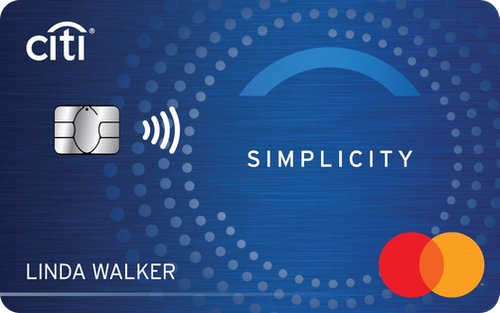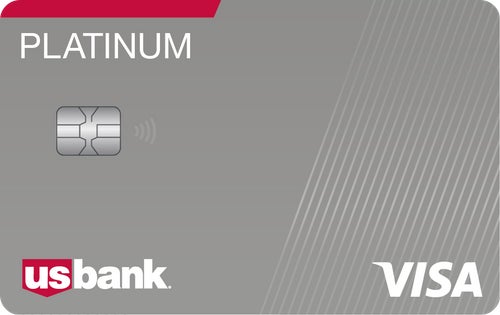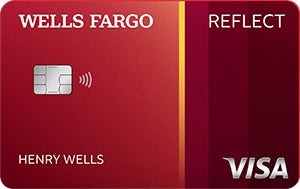- Intro Offer
-
No current offer
- Annual fee
- $0
- APR
- 19.24% – 29.99% (Variable)
- Recommended Credit A credit score is used to indicate an applicant’s credit worthiness and may provide guidance about account eligibility. It does not necessarily guarantee approval for any financial product.
-
670 – 850
Good – Excellent
- Rewards rate
-
N/A This card doesn’t offer cash back, miles, or points
Citi is an advertising partner.
At a glance
If you’re serious about paying off your credit card debt, the Citi Simplicity® Card* offers some very appealing terms for balance transfers: New cardholders get a 0% introductory APR for balance transfers for 21 months from the date of first transfer (then 19.24% to 29.99% variable). Balance transfers must be completed within four months of account opening to qualify for the introductory rate.
The card also features an introductory 0% APR for purchases for 12 months from the date of account opening (then 19.24% to 29.99% variable), which you could use to finance a large purchase.
There are no annual fees and no late fees or penalty rates if you pay your credit card bill after its due date. It does charge a 3% balance transfer fee (minimum $5) for the first four months after account opening, which is competitive among similar card products. After the first four months, the balance transfer fee goes up to 5% (minimum $5).
Our take
Balance transfer credit cards can be a great way to mitigate debt, especially if you take advantage of a lengthy intro APR offer and a low balance transfer fee to pay off high-interest credit card balances. If you have a balance on another card that’s costing you money due to interest charges, you can transfer it over and pay it down while avoiding interest, typically for nine to 21 months.
The intro APR offer on the Citi Simplicity is excellent for balance transfers. It’s one of the longest available on the market today at 21 months. The card’s intro balance transfer fee (3%, minimum $5) is also better than some balance transfer credit cards that offer introductory rates for as long as the Citi Simplicity. The balance transfer fee increases to 5% ($5 minimum) for transfers made after four months from account opening.
However, you’ll probably want to avoid using the Citi Simplicity for new spending. This is partly because it doesn’t offer rewards, but also because you only get an intro 0% APR on purchases for 12 months (then 19.24% to 29.99% variable). So you could be stuck paying interest on your purchases after the first year while you’re still trying to pay down the debt you transferred to this card.
Pros and cons of the Citi Simplicity
The Citi Simplicity offers one of the longer intro APR periods for balance transfers, but there are other considerations.
Pros
Lengthy intro APR period for balance transfers
Competitive balance transfer fee
No late fee or penalty APR if you pay your bill late
No annual fee
Cons
Intro APR for balance transfers and 3% balance transfer fee are only available for the first four months after account opening, then it jumps to 5% ($5 minimum)
Lack of rewards means it offers little long-term value once the intro APR period ends
Short intro APR for purchases
Who’s the card best for?
Because of the way the Citi Simplicity is set up, this card is best for:
- People who are committed to paying off credit card debt: People who are paying interest charges on credit card debt can benefit the most from this card’s lengthy intro APR period for balance transfers, so long as they use the introductory period to pay off their debt.
- Fee-averse folks: This card’s lack of annual fees, late fees and penalty rates makes it a good option for people who want to keep costs down.
Who should skip it?
Some people would be better off applying for a different credit card:
- People who aren’t prepared to tackle their credit card debt. The most valuable benefit of this card is the long introductory APR for balance transfers. If you can’t commit to not using your card and don’t have a plan to pay down your debt, you’ll end up piling on more debt. You may want to consider alternative options for paying off credit card debt.
- Rewards enthusiasts: This card doesn’t offer rewards, so it won’t make sense for people who want to earn rewards on their regular spending.
- People who want a longer 0% intro APR for purchases: If you want to avoid interest on purchases, there are cards that offer longer intro 0% APR periods for new spending.
A closer look at Citi Simplicity
Understanding the features of this card is the best way to decide if it’s right for you.
Introductory APR on balance transfers
The main feature of the Citi Simplicity is its introductory 0% balance transfer APR for 21 months from the date of first transfer (then 19.24% to 29.99% variable) within four months of opening your account. Citi doesn’t allow balance transfers from one Citi credit card to another.
You’ll pay a 3% balance transfer fee ($5 minimum) if you complete your balance transfer within the first four months of account opening; otherwise, you’ll pay 5% ($5 minimum).
Introductory APR on purchases
Citi Simplicity Card offers an introductory 0% APR on new purchases for 12 months, then a 19.24% to 29.99% variable APR after that. But the Citi Simplicity doesn’t feature any rewards, so it’d likely be better to use another card for purchases.
Instead, you could pair it with a flat-rate rewards card with no annual fee, like the Citi Double Cash® Card or Wells Fargo Active Cash® Card, using Simplicity to help eliminate some credit card debt and the other card to earn a return on purchases like gas or groceries.
Other card benefits
The Citi Simplicity’s top benefits are the balance transfer and new purchase offers.
You won’t find a welcome bonus or rewards, and there are few other perks outside of the standard fraud protection. It’s an incredibly simple card best used to help alleviate the pressure you might be feeling from credit card debt.
Citi markets the card as having fewer fees than other cards, but it still has balance transfer fees, foreign transaction fees and cash advance fees to be aware of.
Comparable cards
Consider these alternative cards to the Citi Simplicity. Each one brings something useful to the table, in addition to featuring balance transfer opportunities.
U.S. Bank Visa® Platinum Card
Similar to Simplicity, the U.S. Bank Visa® Platinum Card offers a 0% introductory APR for 21 billing cycles (then 18.74% to 29.74% variable APR), and no annual fee. However, the U.S. Bank card also features an introductory APR on new purchases for 21 billing cycles, so it’s a good option for debt consolidation and new purchases
The U.S. Bank Visa Platinum’s balance transfer fee is 3% of the transfer or $5 minimum, regardless of when you transfer your balance.
It doesn’t offer rewards, but cardholders will get a few extra perks, including cell phone insurance (so long as they pay their phone bill with the card) that protects against damage and theft, and the ability to check their VantageScore credit score from TransUnion.
For more details, see our full review of the U.S. Bank Visa Platinum Card.
Wells Fargo Reflect® Card
The Wells Fargo Reflect Card is another good choice if you’re in the market for a balance transfer card. Cardholders get a 0% intro APR on purchases and qualifying balance transfers for 21 months from account opening (then 18.24%, 24.74% or 29.99% variable APR).
Considering you need to make any balance transfers within the first 120 days from account opening to qualify for the introductory rate, you’ll want to wait to apply for this card until you’re ready to make the balance transfer. Additionally, the card has a 5% balance transfer fee, with a minimum of $5. This makes it more expensive to use for debt consolidation than the Citi Simplicity.
The Wells Fargo Reflect comes with cell phone protection against damage or theft (you’ll need to pay your phone bill with the card to qualify) and roadside dispatch, giving it a little more utility than the Simplicity.
The bottom line
The Citi Simplicity is a great card for balance transfers, especially for people who need more time to pay down their debt. However, this card isn’t great for purchases because of its shorter intro APR period and lack of rewards or notable perks.
Our advice? Use the Citi Simplicity to pay down high interest debt, then switch to another card to earn rewards for new spending.
FAQs
The Citi Simplicity is considered a “good” credit card by most standards since it has an intro APR and it doesn’t charge an annual fee. Whether it’s the best credit card for you depends on your goals with a credit card and which perks and features you want the most.
Because this card’s biggest benefit is its intro APR offer for balance transfers, we believe it’s a good credit card for people who have considerable amounts of high-interest debt to pay down.
Because the Citi Simplicity is geared to consumers with good to excellent credit, it may not be easy to get. If your credit score is in the “fair credit” or “poor credit” range, or below 670, you should work on improving your credit score before you apply.
A balance transfer is a great tool against debt. If you’re accruing interest on a credit card balance, you can move it to a card like the Citi Simplicity and pay it down faster while avoiding interest charges.
Just be sure you’re paying enough each month to ensure you can pay down the balance within the given time period. A good way to figure out how much you should pay is to divide the credit card balance -- including any balance transfer fees -- by the number of months you have for the intro APR offer.
For example, if you have 21 months to pay down a $3,000 balance, you should pay at least $143 each month. If your finances allow it, pay a little extra to give yourself an extra cushion for unexpected expenses while still paying down the balance in time.
More often than not, a balance transfer fee pales in comparison to the cost of the interest charges from the other credit card.
With the Simplicity, if you have a balance of $3,000 on another card, you’d need to pay $90 to move it over if you complete the balance transfer in the first four months of account ownership ($150 if you transfer after that time). If you’re able to pay off the balance within the 21-month period, you’d pay a total of $3,090 -- hundreds or even thousands of dollars less than if you were making minimum payments on a credit card balance accruing interest at 20%.
There are balance transfer cards without balance transfer fees, but they may also come with a shorter offer period. With a shorter offer period, you’d need to pay more each month to pay off your debt entirely before interest starts accruing.
This is fine if your finances allow you to allocate more money toward the balance, but if you’re not able to do that, paying the balance transfer fee to get a longer promotion might be the better choice.
According to Citi, a balance transfer takes anywhere from two to 21 days to process. During that time, be sure you’re still paying at least the minimum monthly payment on the card with the balance to be sure there’s no lapse in payments.
If you’re unable to pay off a transferred balance within the given time frame, the remaining balance will begin to accrue interest at the standard APR.
To make sure you can pay off the balance in time, divide the balance by the number of months you have to pay it off. For example, if you’re working on a balance of $3,000, and the intro balance transfer offer lasts for 18 months with a 3% balance transfer fee, divide $3,090 by 18 months. As long as you’re paying at least $172 monthly starting from the first month, you should be able to pay your balance down to $0 before interest accrues.
Methodology
Our analysis of the Citi Simplicity is based on the card’s advertised interest rates, fees and features, as well as a comparison of other cards based on the same criteria. Information used for the purpose of this review was gathered from Citi and its affiliates and can be located online. Major factors we consider in our card reviews include intro APR offers, regular variable interest rates, credit card fees, rewards, welcome bonuses and cardholder perks. Read more about our credit card methodology.
*All information about the Citi Simplicity Card has been collected independently by CNET and has not been reviewed by the issuer.
The editorial content on this page is based solely on objective, independent assessments by our writers and is not influenced by advertising or partnerships. It has not been provided or commissioned by any third party. However, we may receive compensation when you click on links to products or services offered by our partners.





